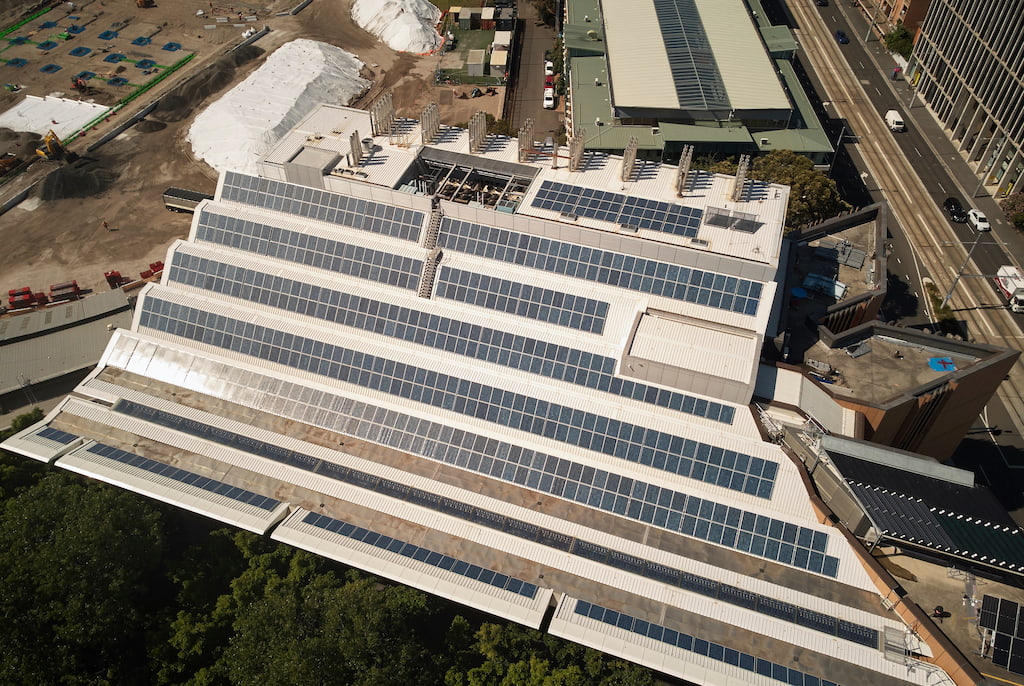Net Zero for Australia’s Built Environment Is Possible by 2040
A guide produced by UNSW experts will help the construction industry achieve net zero in the built environment by 2040.
Researchers from UNSW Sydney have developed a national reference guide to help Australia hit its net zero targets. The free online resource provides a pathway to achieving ‘whole of life’ net zero carbon for Australian buildings by 2040.
Race to Net Zero Carbon: A Climate Emergency Guide for New and Existing Buildings in Australia is a 40-page guide which details critical information about materials and construction best practices to help architects, engineers and planners transform the building industry towards net zero carbon buildings.
“Our guide draws on Australian climate data but has global applicability,” says Professor Deo Prasad, who is lead researcher of the guide. Prof. Prasad is recognised as a national leader in the field of sustainable buildings and among the leading advocates for sustainability in Australia.
The guide is the first to detail a holistic approach to achieving net zero and fills knowledge gaps on net zero carbon buildings.
Net zero means balancing greenhouse gas emissions produced by humans with emissions taken out of the atmosphere.
“This guide provides a deeper level of knowledge on how this sector can rapidly move towards net zero carbon buildings in the short term. Using science-based evidence and analytics, the guide maps a clear roadmap to achieving net zero by 2040 in the building industry. It goes beyond the aspirational and into the achievable,” Prof. Prasad says.
The true carbon footprint of a building
With the Intergovernmental Panel on Climate Change’s 2021 Report labelling ‘Code Red for Humanity’, there is an urgent need to reduce carbon emissions globally, and the building industry is a prime opportunity sector.
The world’s built environment is responsible for 37 per cent of global energy-related greenhouse gas emissions. In Australia, it is responsible for one-fifth of all our emissions.
Carbon emissions within the built environment occur across all stages of a building’s life cycle
“Historically, most professionals have only focussed on reducing the operational carbon footprints of buildings,” says Prof. Prasad. “Operational carbon refers to what is required for the building to run once it is built, like energy use in heating or cooling.”
Operationally carbon–friendly buildings are fully powered from on-site and off-site renewables, which offset the buildings carbon emissions.
Meanwhile, embodied carbon footprints, which are accrued before a building is even constructed, have usually been overlooked by the industry.
“There are significant amounts of emissions embedded in the materials and construction of the building itself and these need to be addressed and offset in order for our built environment to be truly net zero,” says Prof Prasad.
“Our guide goes deeper than just operational offsetting. It illustrates a ‘whole of life’ approach to buildings – considering where building material comes from, how they are transported to the construction site, and so on.”
The best way to minimise the embodied carbon footprint is by retrofitting and reducing materials in use. If that’s not possible, then employing low-carbon materials such as green steel and concrete alternatives during the construction process is best, which is what the guide provides a roadmap for.
Opportunities to improve Australia’s circular economy
The guide also details post-life opportunities for buildings destined to be demolished – creating opportunities to expand the circular economy.
“Buildings don’t have a cradle to grave life cycle,” says Prof. Prasad. “It’s more like cradle to cradle. Materials from demolished buildings can go on to have a future life through recycling and reuse.”
“For example, it’s possible to avoid demolishing old or undesirable buildings as their concrete structures can stay put and the building can be refurbished.
“Timber, aluminium and glass can be reused or recycled somehow into new products.”
Building codes must push to drive carbon down
The challenge in the building industry right now is to get past one-off cases and move into a mainstream situation where net zero construction is the norm. Prof. Prasad hopes the guide will also help Australia position itself as a leader in the global race to net zero in construction.
“While the global community is aiming for net zero by 2050, the building sector has much greater potential and opportunity to reach net zero operational emissions by 2030 and a 60 per cent reduction in embodied carbon by 2030,” he says. “These are the goals our guide aims to achieve.”
“While our guide details advanced knowledge and research, practical design approaches, and benchmarks and targets for industry to be informed, there is another vital lever required to make net zero possible.
“Governments should mandate net zero construction codes, which will push for best performance to achieve net zero. They should lead by example and ensure all public buildings are net zero carbon and provide subsidies and rebates to incentivise change.”
If this is done, not only will Australia achieve net zero in built environment in the short term, we will also create markets for new products and technologies which will benefit the economy.
“It’s not only about eliminating worst practices. It’s about adopting best practices, which, policy-wise, is also economically the right thing to do,” Prof. Prasad says.
“Most countries will be looking at low embedded carbon products, technologies and systems in the future. The government needs to see this as an opportunity to become a leader by promoting innovation in this space.”
This approach does not force additional costs to buildings, but the conversation helps to find the best investment approach to net zero carbon given the appetite for a cleaner and more sustainable future for all.
Clients should be more proactive in driving net zero
Of all the stakeholders in the construction and building industry, it is the clients that have the most power to drive change towards net zero. It is essential to have a client-designer conversation about achieving net zero targets within the 2030 timeframe.
“Our guide has all the knowledge the industry needs to achieve net zero – a roadmap that shows it can be done and, most importantly, the type of conversation clients can have with designers or government.”
Prof. Prasad says while the guide has been developed with practitioners in mind, its implementation throughout the industry will help advocate for widespread reform to construction from the top down.
“It’s essential that the industry – be it clients, government or designers – start speeding up the race to net zero carbon before it becomes too late in the climate emergency.”
Race to Net Zero Carbon is a short guide based on a book by the same researchers Delivering on a Climate Emergency: Towards a Net Zero Carbon Built Environment. The book is recommended for practitioners who want more in-depth information about how their projects can achieve net zero.



